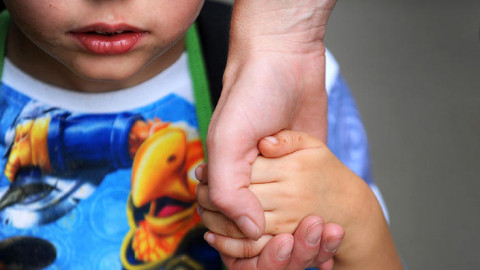
Increasing awareness of autism, the promise of the NDIS, and biological factors like older parents are driving the boom in diagnoses, according to experts.
The number of Australians diagnosed with autism increased by 42 per cent between 2012 and 2015, but research and advocacy groups are adamant it's not a cause for alarm.
In 2015, 164,000 Australians had autism diagnoses, according to results of an ABS survey released on Wednesday. That’s an increase of around 50,000 people since 2012.
This figure reflects the number of diagnoses - not the number of people with conditions that might be classified as autism if they sought a diagnosis.
Professor Andrew Whitehouse, Senior Principal Research Fellow at the University of Western Australia's Telethon Kids Institute, said that Australia’s autism diagnosis rate was now in line with other countries at around 1.1 per cent.
"What this figure represents is a rise in the numbers of children and adults diagnosed with autism,” he said.
"All the evidence that we have to date is showing that the rise in the number of kids and adults being diagnosed with autism is due to increased awareness, not just at the health professional side, but also at the family side.”
He added that the roll-out of the NDIS has led to more Australians seeking formal diagnosis in order to access services.
Autism Awareness Australia CEO, Nicole Rogerson, said we are only now understanding the true prevalence of autism in the community.
"I would hate to think that this statistic freaked out new parents of little babies and toddlers right now that think we are in the grip of some frightening epidemic,” she said.
"That’s where silly conspiracy theories and vaccination theories [about a link with autism] come from, and that’s all really unhelpful.”
Autism is a condition that affects the brain’s growth and development, and can be characterised by difficulty in social communication and interaction.
Professor Cheryl Dissanayake, from the Olga Tennison Autism Research Centre at La Trobe University, said the rise was also caused by a broadening of the criteria of autism and improvement in identifying autism earlier in children.
She said the increase may also be linked to biological factors and that children of older fathers and premature babies have a higher chance of receiving autism diagnoses.
"Premature babies live now, in the past they used to die. Prematurity is a risk factor for autism,” she said.
"There are biological factors that work to increase the risk, they haven’t all been identified.”
She said one paper she contributed to found that the mean age of diagnosis for people under seven was around four years of age whereas in the 1980s children were rarely diagnosed before five or six, "so we are getting better."
Ms Rogerson said diagnosing a child and providing dedicated assistance from age two or three will help them achieve “their best outcome”.
"Children with autism can make marked improvements and make autism a lot less disabling in their life if they have got access to good quality early intervention,” she said.
“But it’s the ‘early’ in early intervention that’s important.”
According to the ABS survey of 63,500 people in 2015, of those with autism, almost two-in-three were classed as having “profound or severe disability” and almost three-in-four needed help with cognitive and emotional tasks. About half needed help with communication.
The ABS classifies autism as including Asperger’s Syndrome, pervasive developmental disorder, Rett Syndrome and childhood disintegrative disorder.
from http://www.sbs.com.au/news/article/2017…
see also Concerns arise from 2015 ABS disability survey results